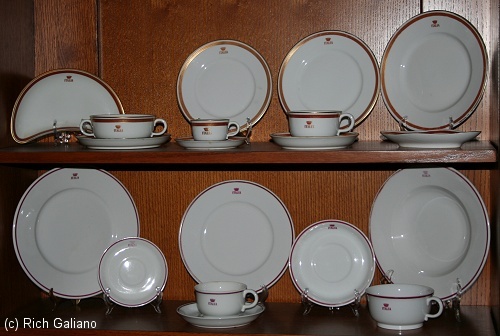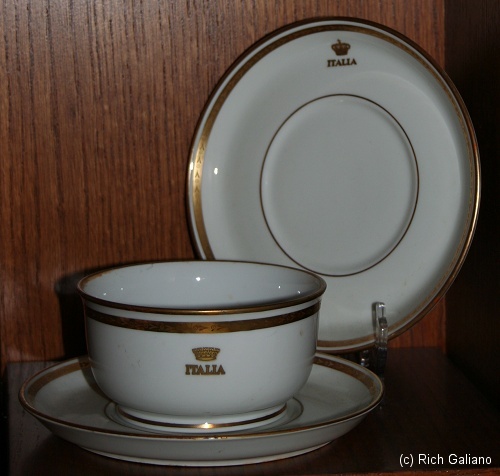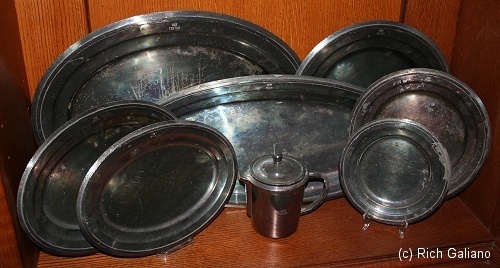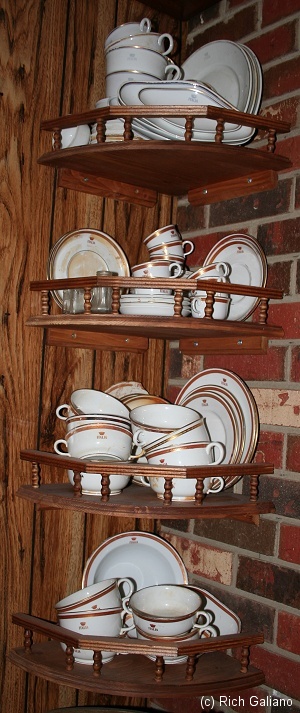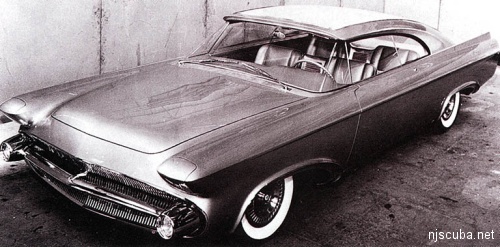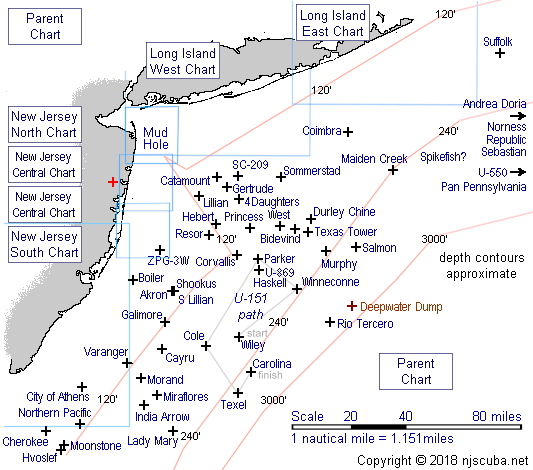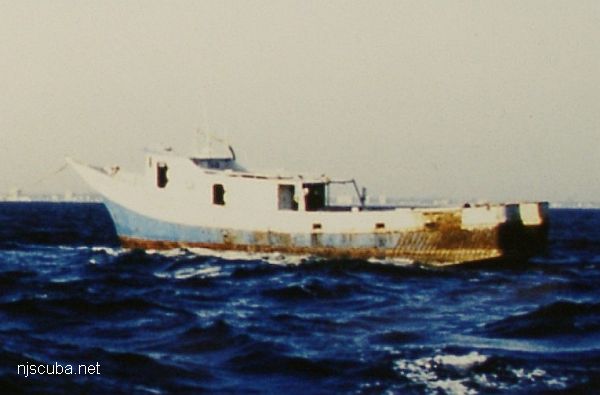Andrea Doria (4/7)


The ship's bell is always a prize find for a wreck diver. It is conclusive proof of a wreck's identity, but also something more -- an integral part of the ship itself. The bell from the Andrea Doria was a real treasure; in the words of Gary Gentile, "The ultimate artifact from the ultimate wreck."
Captain Bill Nagle's dream was to recover this "ultimate artifact". To this end, he assembled a team of divers, eventually bought a dive boat (the SEEKER), and finally set out to make his dream a reality. The group succeeded in recovering the Andrea Doria's stern bell -- Gary Gentile gives a detailed account of the entire mission in his book Andrea Doria: Dive to an Era.
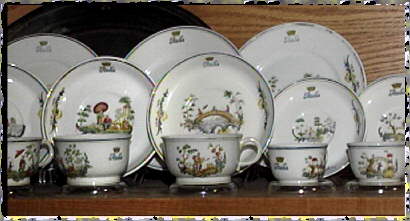
In the era of the great trans-Atlantic liners, traveling first class meant the height of luxury. Of the Andrea Doria, the Italian Line said, "She was also designed as a living testament to the importance of beauty in the everyday world." This was reflected in every part of the ship, right down to the china service.
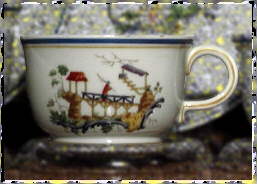 Each piece of this elaborate First Class china bears a scene in an Oriental design. | 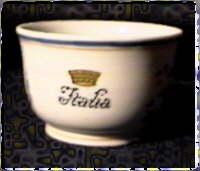 There are a number of different scenes, and a stylized version of the Italia crest was used to complement the design. |
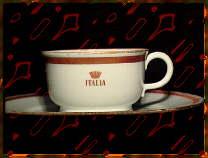 The standard First Class china was less ornate, but elegant in its simplicity, with a border and crest of red and gold leaf. |  The china used by the Second and Third Class passengers was plainer than the First Class pieces, but is still evidence of the Italian Line's commitment to "beauty in everyday life" aboard ship. |
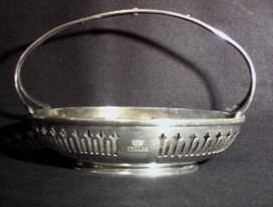 A silver bread basket from First Class. | 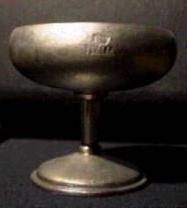 The pewter sherbet dish was used in the Second Class dining room. |
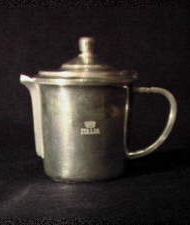 A silver teapot from First Class. There are several size teapots, which were used according to how many passengers were seated at the table. | 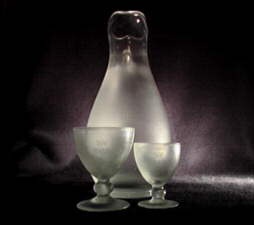 When the first dives were made to the second class area in 1991, this pitcher was the first item retrieved. |
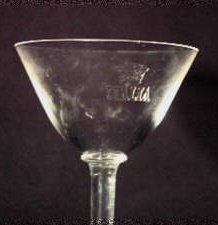 A martini glass. | 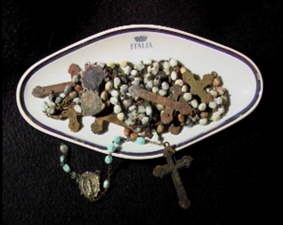 These rosary beads were being shipped from Italy to the United States as part of the Andrea Doria's cargo. |

In pictures onboard the ship, vases like this one appear on each table in the dining room. The vase is made from a low-quality clay, decorated with a floral design.
Gambone Panels
Guido Gambone, an Italian artist and potter, was just one of the many contributors to the beauty and elegance aboard the Andrea Doria. Gambone, born in 1909, worked near Naples until 1949, then started a workshop at Florence. His work included many brightly colored earthenware vessels formed into fantastic and exagerated figures. The panels, pictured below, show Gambone's typical style: modern, but with a primitive flavor reminiscent of the Etruscan or early Greek.
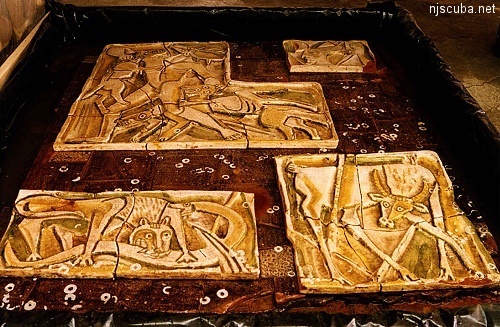


These two panels were recovered from the wreck in 1993 by New Jersey diver John Moyer, who was previously awarded salvage rights to the wreck. Each panel weighs in excess of 500 pounds, and both were attached to walls deep within the wreck. Bringing these treasures to the surface required a tremendous effort which included not only divers, but also a crane and forklift to move the panels from the dive boat to the water-filled boxes in which they now rest as part of the preservation process.
Romano Rui Panels
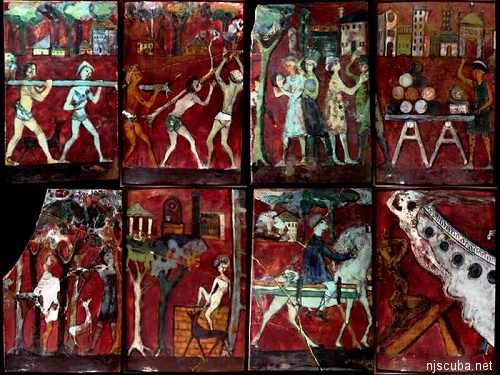
These ceramic panels, each measuring about two and a half feet high by a foot and a half wide, were painted by Italian artist Romano Rui. A series of these panels once adorned the first-class cocktail lounge of the Andrea Doria, 15 panels on the port side, and another 15 on the starboard side. The art on the panels is in a very simple style and depicts scenes from Medieval life. The panels are rich with the symbolism of the age.
The panel showing the figure on horseback is evidence of what can be accomplished through teamwork and cooperation. John Chatterton recovered this broken panel, but was missing two pieces. Gary Gentile turned up those two pieces, which he traded to John in exchange for pieces John found which fit a panel Gary had retrieved. The cracks visible here show where the missing pieces were fitted into place.
The panels were originally arranged in order, with the subject of one panel related to that of the panels on either side. We see here only excerpts from the story told by the entire sequence. An effort is underway to collect digital images of all of the Rui panels which have been recovered from the Andrea Doria. As each panel is collected in this virtual exhibit, the original sequence can slowly be pieced back together as shown here. This is the first time since the ship went down that all of the panels shown on these pages have ever been seen together.
Original NJScuba website by Tracy Baker Wagner 1994-1996
